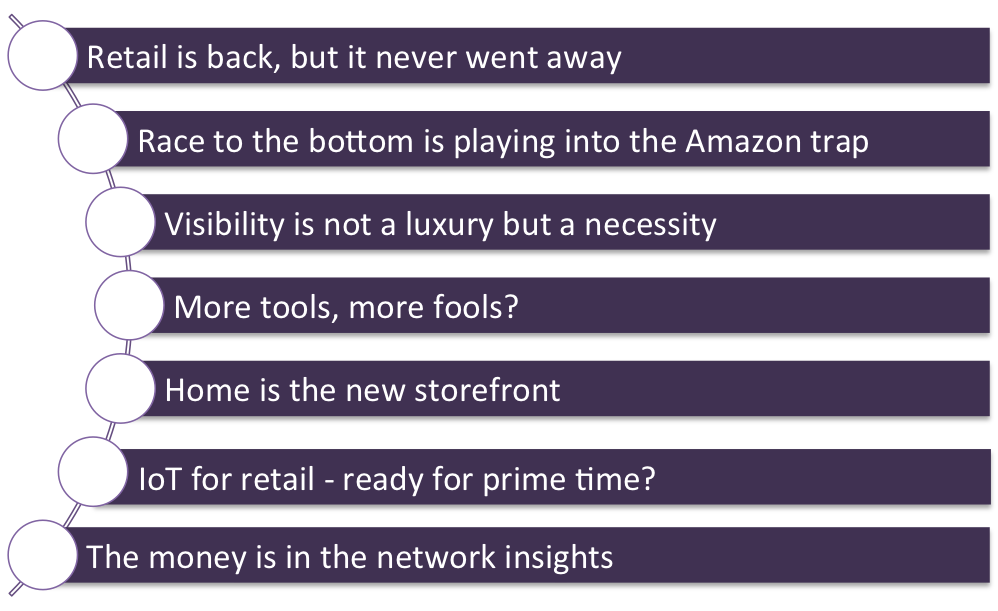The state of retail in 2015 and beyond

Constellation recently published our "State of Enterprise Technology" series of research reports. My contributions to "State of Enterprise Technology" series focus on Matrix Commerce (retail and commerce technologies). In my report, The State of Retail in 2015 and Beyond, I identified seven trends impacting retail. Here's an excerpt from the report:
The Customer-Retailer Relationship Becomes More Cooperative
From conversations with clients, prospective buyers, systems integrators, partners, and vendors, Constellation sees a number of retail themes. These trends all revolve around the continuing amplification of the consumer voice in the retail supply chain. As consumers gain more influence within the retail supply chain, retailers will continue to focus on areas that allow for greater cooperation among all entities. Savvy retailers realize they can no longer expect to dominate the relationship but instead should allow for an atmosphere of cooperation.

Let's dive a little deeper into one of these trends...
Race to the Bottom is Playing into the Amazon Trap
Companies like Footlocker are leaning on their physical stores, coupled with frictionless enablers (such as Deliv, which brings a crowdsourcing model to same-day delivery), to provide consumers same-day delivery of products. Grocers like Trader Joe's, Wegmans and Whole Foods are looking to turn their stores into food theme parks. They are playing on consumers' senses, such as smell and taste, as well as offering personalized experiences that cannot be replicated via a laptop, tablet or smartphone. Nordstrom has built its reputation on world-class customer service in stores, online and in the social media world. Ensuring that the consumer enjoys this experience on any channel keeps the Nordstrom brand and business aloft.
In 2015, retailers will scramble to react to how Amazon pushes the retailing envelope. Retailers need to avoid the trap of focusing too much on what the e-commerce giant is doing, but take a balanced approach and learn lessons from what other retailers have done to avoid being completely overwhelmed by Amazon.
Matrix Commerce Addresses the Buyer in Digital Transformation
The theme of Matrix Commerce analyzes the disruptive pressures influencing the commerce paradigm. Commerce faces rapidly changing business models and new payment options that are often misunderstood and poorly integrated.
Matrix Commerce means the fusing of demand signals and supply chains in an increasingly complex world of buyers seeking frictionless buying experiences. Friction in this new world originates from new regulatory requirements such as sustainability, taxation, and privacy.
As the world revolves around the buyer, channels, demand signals, supply chains, payment options, enablers, and big data will converge to create what Constellation coined in 2011 as "Matrix Commerce." Matrix Commerce spans across disciplines as people, process, and technologies continue to transform today's commerce models.
Download the report snapshot and table of contents of The State of Retail in 2015 and Beyond.